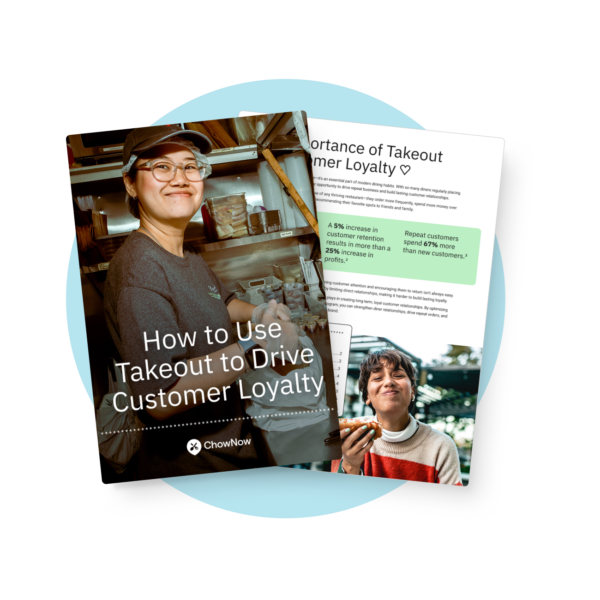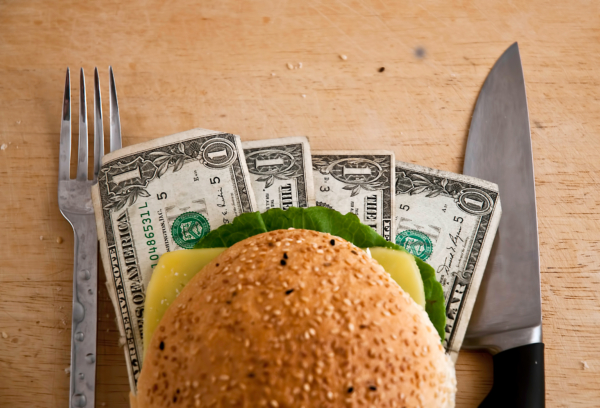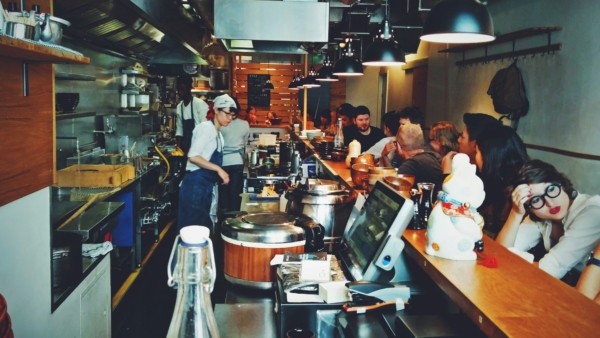Restaurant Cash Flow Management 101: Building Good Financial Habits

Whether you’re a roadside fruit stand or a Michelin star restaurant, cash flow management is crucial. It doesn’t matter how fine-tuned your menu is or how much marketing buzz you have if you’re spending more money than you’re earning.
Understandably, most restaurant owners aren’t financial experts. And there’s more to restaurant cash management than simply bringing in more money to cover expenses. That’s why we’ve put together a few core tips to help you master the basics and plan a successful future.
What is Cash Flow?
Cash flow is the net amount of money moving in and out of your restaurant. This is split up between cash inflow—money that your business is taking in—and cash outflow—money that you spend on operating costs. There are multiple sources for inflow and outflow, including:
Cash Inflow:
- Sales Revenue
- Catering Services
- Business Loans
Cash Outflow:
- Employee Payroll
- Inventory Costs
- Rent & Utilities
Your total cash flow is the inflow minus the outflow: Total Cash Flow = Cash Inflow – Cash Outflow
Obviously, you want to make more money than you spend. This is called positive cash flow. If you spend more than you make, that would be negative cash flow. Always try to stay positive!
Why is Positive Cash Flow Important?
In addition to letting you maintain daily operations, positive cash flow sets your business up for success or sustainability in multiple ways. Unforeseen emergencies are easier to handle if you have enough of a positive cash flow to weather the storm. It’s also easier to grow your business if you already have enough positive cash flow to cover the added expenses.
Brief periods of negative cash flow can be manageable, and sometimes they’re unavoidable due to outside circumstances. For example, new businesses might face initial negative cash flow as they cope with large one-time costs like new equipment and employee training.
However, poor restaurant cash flow management can result in failing to pay employees, vendors or debtors. You can’t serve customers if you have nothing to serve! According to bank research, 82% of small businesses fail due to cash flow problems. Proper restaurant cash management is simply too important to ignore, but thankfully anyone can learn good budgeting practices.
Tips to Maintain Positive Cash Flow
Regular Monitoring & Forecasting
Staying informed about your restaurant’s cash flow is the most essential step to keep your business healthy. A cash flow analysis will let you monitor your finances by summarizing all of your cash inflow and outflow, which will help you find patterns for what is or is not working. It can also help you predict future patterns so you can make informed decisions about business changes. Consider using forecasting tools or software to quickly create predictions and run simulated cash flow scenarios.
An analysis can be performed over any period of time—month, quarter, year—so try to do multiple to give you a more in-depth analysis of a short period of time as well as an overarching view of your business over a long period. If your business caters to a lot of summer tourists, for example, your cash flow analysis will look very different for a summer month versus a winter month, but the year-long analysis might look healthy.
We’ll go into more detail on cash flow analysis in just a bit.
Inventory Management
Whether it’s to ensure you have enough inventory to sell or to ensure you’re not wasting inventory, careful management is a key aspect of any successful restaurant. Tracking inventory turnover lets you focus your vendor purchases (cash outflow) on menu items that yield sales (cash inflow). Here are just a few tips for successful inventory management:
- Organize & track your inventory. Properly labeling all inventory makes it easy to identify what needs to be restocked.
- Keep stock relatively low. Avoid food spoilage by keeping only as much stock as you need to serve customer demand.
- Monitor sell-through rate. Keep track of how much each item sells so you know how to meet customer demand.
Check out our blog for more inventory management best practices, and consider using an inventory tracking tool to make management even easier for you.
Cost Control
Identifying and reducing unnecessary expenses is a great way of improving your cash flow. Simple steps like being mindful about portion sizes, standardizing your recipes or organizing your menu to highlight profitable dishes can easily yield positive results.
Negotiating with your suppliers for better prices can also make a huge difference. That includes rent, insurance and other utility suppliers as well. Sometimes simply spacing out your supplier bills helps make cash flow more manageable too by eliminating peaks and valleys in your budget. Just make sure there aren’t any additional fees for doing so.
Revenue Enhancement
In addition to reducing cash outflow, there are numerous ways to increase cash inflow. Focusing on strategies that increase customers without changing your menu can be simple and effective, such as:
- Implement marketing strategies like our automated email marketing system to boost sales.
- Offer promotions and special offers to attract customers.
- Assess menu prices and pricing strategies to optimize appeal as well as promote upsell opportunities.
Although marketing efforts and promotions have an upfront cost, a successful marketing strategy will have long-term benefits.
Maintain a Cash Reserve
Just like in your personal finances, you’ll be glad to have some extra cash available for unexpected emergencies. That could mean a broken stove, a leak in the roof or something as simple as a slow month of sales. Plan to set aside a portion of your profits for emergency use. There’s no fixed cash reserve amount that you should have—many financial experts recommend three to six months’ worth of expenses, but you should calculate what works best for your business.
Steps for Effective Cash Flow Management
In addition to these basic cash flow management tips, here are some next steps for using cash flow data to guide your business decisions.
Conduct a Cash Flow Analysis
The first step of a cash flow analysis is to create a cash flow statement, which lays out all of your sources of cash inflow and cash outflow. For a restaurant, this is typically limited to standard operating costs and gains, but you may also have cash flow from investments or financing you’ll want to consider. Once you’ve identified all your sources of cash flow, it’s a simple matter of adding up your cash inflow and subtracting the cash outflow for a specific period of time.
Investing in automation tools might help you streamline the process and make sure you don’t miss a source of cash flow in your statement. Either way, you’ll want to create multiple cash flow statements—one for each month or each period—to easily compare how your cash flow is changing and what sources might need to be adjusted to ensure positive cash flow.
Develop a Cash Flow Forecast
Your cash flow statements and cash flow analysis will also help you create a forecast to predict your future cash flow. Forecasting can help you to:
- Ensure you have enough cash flow to cover your day-to-day expenses.
- Manage debts or interest payments.
- Assess the health of your business and take steps to reduce risky situations.
- Decide when to invest in growth.
Just like an analysis, cash flow forecasts can cover a short period of time (month, quarter) or a long period (6 months, year). Your forecast should be backed up by both historical data from your business and market trend data. Most importantly, remember that no forecast is perfect! There’s no telling when unpredictable events could disturb your forecast, so try to keep a solid umbrella of positive cash flow to deal with those rainy days.
Set Up Regular Financial Reviews
Financial management works best when it’s handled on a regular, frequent schedule. Whether you set up a review every month or every quarter, constant monitoring of your finances is always a helpful strategy. Don’t be afraid to hire a financial expert for extra help. At minimum, they may be able to point out more best practices to keep your restaurant on the right track.
With these restaurant cash flow management tips, you can take control of your finances and build a thriving restaurant.
Restaurant Cash Flow Management Frequently Asked Questions
What is cash flow in a restaurant?
Cash flow in a restaurant refers to the movement of money in and out of the business. It includes cash inflow, such as sales revenue, catering income, or loans, and cash outflow, like payroll, rent, and food costs. Managing cash flow is essential for keeping the restaurant running smoothly and sustainably.
Why is positive cash flow important for restaurants?
Positive cash flow ensures that a restaurant can cover its operating expenses, handle unexpected costs, and invest in growth. Without it, even profitable restaurants can struggle to pay vendors, staff, or rent, ultimately risking closure.
How do I manage cash flow in a restaurant?
To manage cash flow in a restaurant, regularly track income and expenses, conduct cash flow analyses, forecast future cash flow, control costs, boost revenue, and maintain a cash reserve. These steps help ensure long-term financial stability.
How do restaurants increase cash inflow?
Restaurants can increase cash inflow by improving marketing efforts, offering direct online ordering, optimizing menu pricing, hosting promotions, and introducing catering or takeout services. These strategies drive more revenue and improve overall cash flow.






